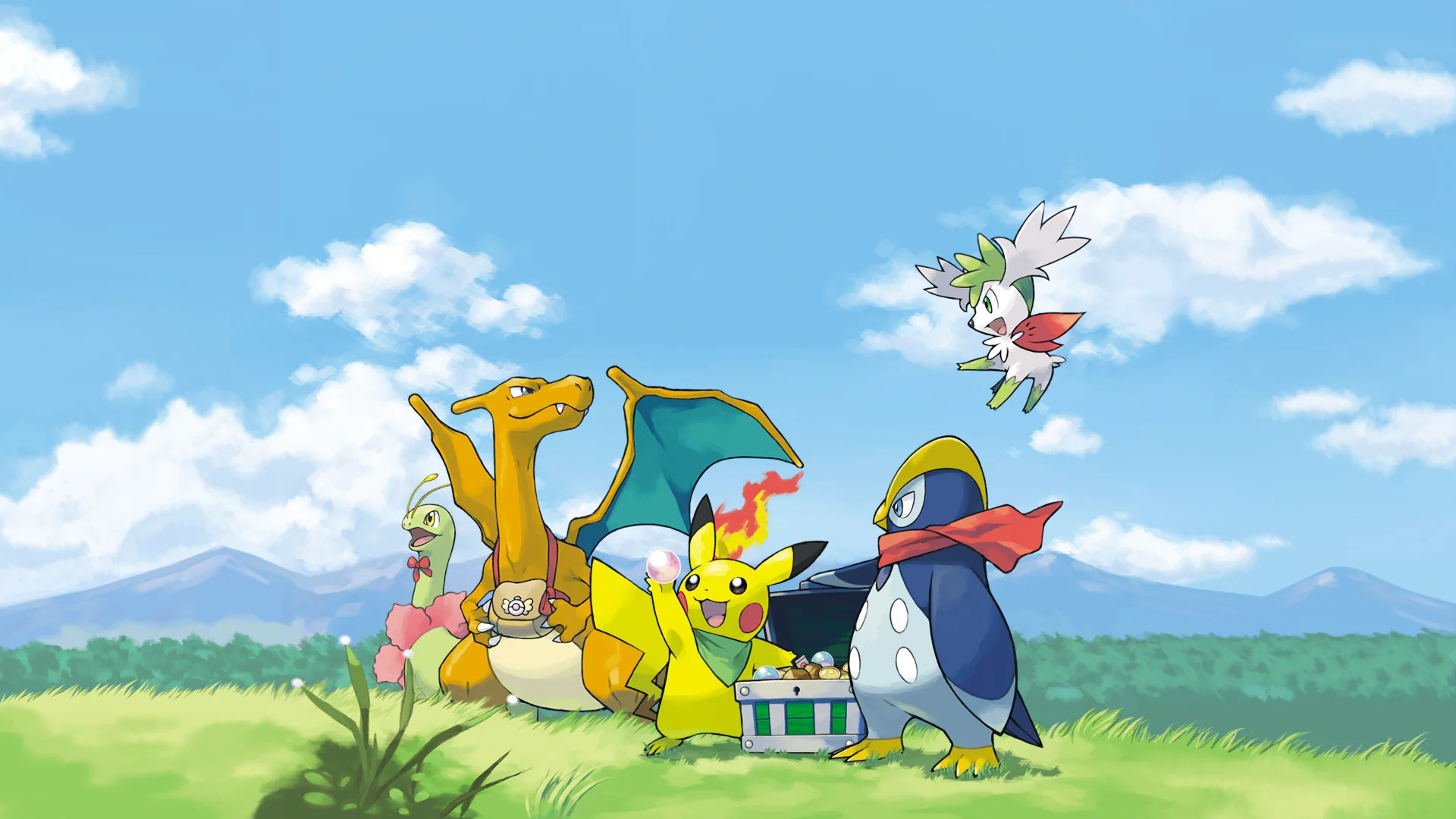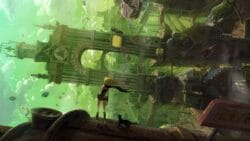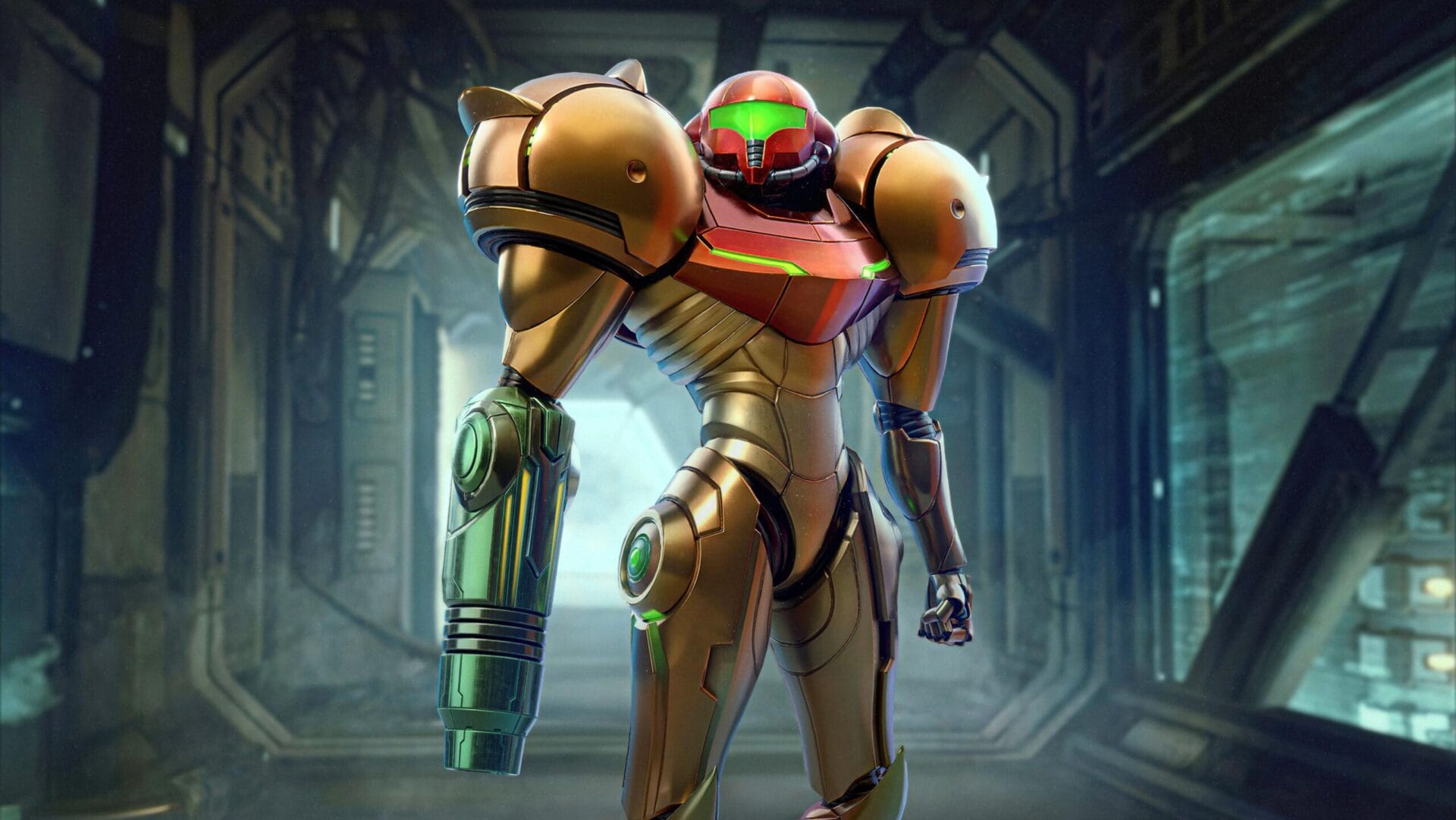I wanted to love Super Mario Sunshine. I really did. Coming off the groundbreaking Super Mario 64, expectations were high for the GameCube’s first 3D Mario title. But despite its sun-drenched aesthetic and ambitious water-powered mechanics, Sunshine often felt more frustrating than fun. The punishing platforming, awkward controls, and tedious blue coin hunts left a lingering sense of wasted potential. Even Nintendo seemed to acknowledge its shortcomings, as they pivoted sharply for Mario’s next adventure.
Enter Super Mario Galaxy—a game that not only course-corrected from Sunshine’s missteps but also took 3D Mario platforming to new heights. Released for the Wii in 2007, Galaxy built upon Super Mario 64’s foundation while introducing revolutionary gravity-based mechanics, a breathtaking orchestral score, and some of the most imaginative level design in the series’ history.
In this review, I’ll be analyzing its visuals, gameplay, and lasting impact to answer one key question: is Super Mario Galaxy still worth playing today?
Story & Visuals
The Wii wasn’t a powerhouse. Compared to its contemporaries—the Xbox 360 and PlayStation 3—it lagged behind in raw graphical capabilities, lacking HD output and relying on standard-definition visuals. Yet, Super Mario Galaxy made those limitations feel irrelevant. Rather than chasing realism, Nintendo embraced a stylized, painterly aesthetic, crafting a game that still looks stunning today.
One of the best examples of this is the game’s opening cinematic. As Bowser descends upon the Mushroom Kingdom’s Star Festival, the sky erupts with fire, illuminating the kingdom with dynamic lighting effects. The reflections in the water, the crisp particle effects, and the sheer scale of the invasion set the tone for a cosmic adventure unlike anything Mario had seen before.
Right from the Star Festival’s fireworks, Galaxy shows how clever use of lighting and effects can transcend low resolution. Explosions of color light up Peach’s castle, reflections shimmer in puddles, and embers float through the air as Bowser’s ships attack. These subtle touches add cinematic flair and a sense of scale that many contemporary games on more powerful hardware failed to match.
The art direction is equally impressive across its many galaxies. Good Egg Galaxy’s sunlit planetoids glow with rich hues; Gusty Garden Galaxy’s sweeping meadows ripple under gusts of wind; Space Junk Galaxy’s eerie void is dotted with sparkling debris that conveys both beauty and loneliness. These varied, meticulously crafted worlds make exploration feel like stepping into a series of whimsical, interactive paintings
But the real technical marvel is Galaxy’s seamless gravity system. Mario moves across spherical planets with fluid animation, and despite the sheer variety of gravity-defying mechanics, there’s no noticeable loading between planetary transitions. Instead of feeling like separate levels, the game flows like an intergalactic playground, where every leap into the unknown feels exhilarating.
Unlike Super Mario 64’s Peach’s Castle or Sunshine’s Delfino Plaza, Super Mario Galaxy introduces the Comet Observatory—a celestial space station that serves as both the game’s hub and a narrative focal point.
Visually, the stained-glass windows, soft ambient glow, and floating star bridges give the Observatory an ethereal, dreamlike quality. It perfectly matches the game’s whimsical, almost fairy-tale-like tone. Of course, the Comet Observatory isn’t just a visual setpiece—it’s also home to Rosalina, one of the most intriguing characters introduced in the Mario universe. Through her storybook cutscenes, the narrative touches on themes of grief, longing, and healing—emotions rarely explored so openly in a Mario game.
For a series known more for cheerful platforming than deep storytelling, Super Mario Galaxy’s inclusion of Rosalina’s storybook was a revelation. More than just a quest-giver, Rosalina stands out as one of the most intriguing characters Nintendo has ever introduced. Part celestial guide, part maternal protector, she watches over the universe from the Comet Observatory and cares for the orphaned Lumas as her own. Her presence brings a sense of mystery and quiet strength that sets her apart from characters like Peach or Daisy, cementing her as a fan favorite and a cornerstone of modern Mario lore.
Unlike past hub worlds, the Observatory isn’t just a static location—it evolves as you progress. Initially dim and desolate, it gradually comes to life with vibrant colors and twinkling starfields as you restore power to its domes. Each newly unlocked dome grants access to fresh galaxies, reinforcing a tangible sense of progress.
While many players were enchanted by Rosalina’s melancholy backstory, others found the slow, dialogue-heavy storybook scenes at odds with Galaxy’s breezy, kinetic gameplay. These interludes sometimes halt the game’s momentum, creating tonal whiplash between intense platforming challenges and reflective, somber storytelling. Whether you see them as atmospheric highlights or unwanted interruptions, there’s no denying they stand out—offering a rare, contemplative pause in an otherwise fast-paced Mario adventure.
Gameplay Mechanics
Super Mario Galaxy follows the classic Mario formula of collecting multiple Power Stars across different stages, but with a fresh twist—instead of a handful of massive worlds, the game features 42 distinct galaxies, each offering its own mechanics, themes, and surprises. While some galaxies contain only a single star, others feature up to seven, ensuring a sense of constant discovery.
Scattered across every galaxy are shimmering Star Bits—tiny rainbow crystals that turn exploration into a constant, rewarding hunt. Pointing the Wii Remote at the screen lets you grab them from afar, keeping you engaged even when Mario’s standing still. Collected Star Bits can be fired at enemies to stun them or given to Hungry Lumas, who demand increasingly greedy offerings to open new galaxies. It’s a perfect system: part collectible, part currency, part interactive toy, all designed to keep your eyes scanning the stars.
If Super Mario 64 established the blueprint for 3D platforming and Super Mario Sunshine experimented with water-powered traversal, Super Mario Galaxy rewrote the rules of movement entirely. One of the game’s greatest joys (and occasional headaches) is how gravity can flip expectations.
Mario can run upside down, cling to undersides of planets, and even walk sideways on walls as gravity shifts around him. This opens up puzzles that rely not on what’s in front of you, but what’s around, above, and below. Enemies and hazards follow suit—some stick to the same gravitational field as Mario, others don’t, leading to mind-bending encounters. At times, gravity feels like your greatest ally; at others, it becomes a playful trickster, demanding creative thinking and spatial awareness.
Galaxy’s Spin Attack is brilliantly versatile. A quick flick of the Wii Remote sends Mario spinning, letting him attack enemies, break crystals, bounce off obstacles, or add precious distance to a jump. It feels intuitive and satisfying, giving even routine platforming a tactile spark. The spin’s timing and range add subtle layers of mastery, making it more than a gimmick—it’s a central pillar of Mario’s new moveset, equally useful in exploration, combat, and puzzle-solving. By marrying simplicity with depth, the Spin Attack proves just how smartly Galaxy reinvents Mario’s core abilities.
Unlike many Wii games that forced motion controls into every moment, Super Mario Galaxy uses them with surprising restraint—and brilliance. Pointing the Wii Remote to collect Star Bits or aim at enemies keeps both hands active without feeling forced. Pull Stars, where you grab and fling Mario across the screen, add satisfying moments of precision and flow. Tilting sections—like shifting floating platforms—inject just enough physicality to keep things exciting without overwhelming the core platforming. These smart, measured touches make the most of the Wii’s unique controller while respecting traditional gameplay.
Then there’s the Rolling Ball levels—an experiment that splits players to this day. Standing on a giant sphere, Mario must roll to the goal by carefully tilting the Wii Remote like a joystick. When it clicks, it feels like a tightrope act of pure skill; when it doesn’t, it can feel like wrestling an uncooperative shopping cart on an ice rink. The sensitivity of the motion controls here exposes the Wii’s limits, making these levels the game’s most divisive moments—equal parts brilliant and maddening.
Galaxy’s Co-Star Mode lets a second player grab a second Wii Remote to join in by controlling an on-screen cursor. They can collect Star Bits, freeze enemies, and even help Mario jump—giving newcomers, kids, or less experienced friends a way to contribute without dealing with complex platforming. It’s not full-on co-op, but as a lighthearted multiplayer addition, it’s unexpectedly delightful. While some dismiss it as a novelty, Co-Star Mode creates a sense of shared adventure that makes Galaxy even more fun to play together on the couch.
From your very first boss fight with the towering Dino Piranha, Super Mario Galaxy makes it clear that these aren’t your average Mario scuffles. Battling Dino Piranha requires you to chase the creature around a tiny planet, timing your spin to smack its tail and crack its eggshell. It’s a perfect introduction to Galaxy’s unique blend of platforming and gravity, teaching you to use the environment itself as a weapon. Early bosses like King Kaliente—a fiery octopus that volleys flaming meteors back at you—set a high bar for creativity and spectacle.
When it comes to Bowser, Galaxy doesn’t disappoint. Each showdown with the Koopa King takes place on shifting, crumbling planets orbiting lava-filled voids. You’ll dodge massive shockwaves, race along crumbling platforms, and exploit gravity to send Bowser flying into hazards. The scale and presentation of these fights feel monumental, turning classic Mario-Bowser clashes into breathtaking, cinematic centerpieces that build perfectly toward the game’s explosive finale.
What sets Galaxy’s bosses apart is how they’re designed as miniature puzzles as much as battles. Bosses like Bouldergeist require you to use Bomb Boos to destroy their rocky armor, while Major Burrows has you lure him out of tunnels with precise timing before a quick spin knocks him senseless. These encounters test your mastery of Galaxy’s unique mechanics—gravity, momentum, and spin attacks—rewarding brains as much as reflexes. Each boss fight feels distinct, challenging you to think as well as jump, and making every victory all the more satisfying.
Musical Composition
The moment you step into Gusty Garden Galaxy, the music doesn’t just accompany the action—it lifts it. The soaring strings, punchy brass, and triumphant melody feel like a fanfare for discovery itself. It’s not just background noise—it’s an anthem. This track became an instant classic, widely regarded as one of the best pieces of music in Mario’s entire history. It perfectly captures what Super Mario Galaxy is all about: boldness, beauty, and the thrill of leaping into the unknown.
In contrast to the bombastic highs of Galaxy’s adventure themes, Rosalina’s motif is delicate, slow, and achingly beautiful. Heard during her storybook interludes and quieter Observatory moments, it adds a subtle emotional undercurrent that grounds the game’s cosmic scope with something deeply human. The soft piano and music box tones reflect themes of loss, loneliness, and hope—elements rarely explored so directly in a Mario game. It’s a small piece of music, but one that lingers long after the credits roll.
Super Mario Galaxy marked the first time a Mario game used a full orchestra, and the difference is breathtaking. Composed by Koji Kondo and Mahito Yokota, the music enhances every moment with cinematic flair. The score doesn’t just match the gameplay—it elevates it. Flying between planets feels more heroic, diving into black holes feels more ominous, and simply standing still to take in the surroundings feels earned. It’s no exaggeration to say the orchestral soundtrack helped define Galaxy’s identity as a grand, emotional space opera in platforming form.
Every action in Super Mario Galaxy is punctuated by satisfying, responsive audio cues that make the world feel alive. Collect a Star Bit, and you’re rewarded with a glittering chime that’s as addictive as it is cheerful. Launch Mario across the cosmos, and the whoosh of a Launch Star gives the leap weight and momentum. These small, polished effects add layers of tactile feedback, making every jump, spin, and twinkle feel purposeful. It’s the kind of subtle craftsmanship that turns moment-to-moment gameplay into a sensory delight.
Not every sound in Galaxy is loud or showy. Some of its most impactful audio design lies in its quietest moments. As you wander the Comet Observatory, a gentle ambient hum radiates through the air, underscoring the mystery of this celestial hub. There’s a weightless serenity to these spaces, where soft cosmic noises and distant star twinkles replace traditional background music. It invites you to slow down, breathe in the atmosphere, and feel the scale of the universe Mario’s navigating.
The sound design in Galaxy doesn’t just react—it transforms. Music swells as you approach enemies, quiets as you near secrets, and intensifies as boss battles heat up. Wind picks up when you enter stormy galaxies, while mechanical clunks echo through robotic stages. This dynamic layering creates a sense of presence that goes beyond visuals. You don’t just see the galaxy—you hear it react to you. It’s a masterclass in using sound not as background filler, but as a fully integrated part of the adventure.
Level Design
Before Galaxy, 3D platformers were largely built on flat terrain and linear planes. Super Mario Galaxy blew that wide open. By designing levels around tiny planets and spherical bodies, Nintendo rewrote the rulebook—literally changing the way players navigated 3D space. Suddenly, you weren’t just moving left, right, or up—you were orbiting, looping, and reorienting in real-time. The moment you run in a full circle around a planet and return to your starting point is when you realize: this isn’t just Super Mario 64 in space. It’s something altogether new.
What could’ve felt disjointed—leaping between dozens of floating mini-worlds—is instead smooth and cinematic. Launch Stars hurl Mario across the galaxy with no loading screens, no jarring cuts—just one continuous, thrilling ride. The camera swings effortlessly to follow him, adapting to new gravity fields without disorienting the player. It’s a masterclass in technical and design cohesion. Every transition feels intentional, every leap full of momentum. By the time you’ve bounced between three planets, slid around a curve, and landed on a boss arena—all in one breath—you realize you’re playing a platformer that moves more like a symphony than a level map.
What truly sets Super Mario Galaxy apart is its incredible variety. Honeyhive Galaxy introduces Bee Mario, letting you buzz around flowers and cling to honeycombs in charming vertical playgrounds. Space Junk Galaxy, on the other hand, throws you into eerie, fragmented platforms floating in cosmic voids, where every step might assemble or disappear beneath you. Each galaxy feels like a fresh idea brought to life, ensuring the adventure never grows stale.
Take Gusty Garden Galaxy, where powerful gusts send Mario soaring across fields of giant dandelions while one of gaming’s greatest themes swells triumphantly. Then contrast it with Toy Time Galaxy, where Mario shrinks to the size of a figurine to navigate colorful worlds of building blocks, springs, and spinning gears. These wildly different themes—and the unique mechanics they introduce—highlight Galaxy’s refusal to recycle ideas. Each level feels like a standalone experiment in platforming joy.
Some galaxies offer brief, focused challenges—just one Power Star to find before moving on—while others unfold across sprawling, multi-mission adventures with up to seven stars to collect. This balance between short bursts of creativity and deeper, more complex levels keeps the pace snappy and the experience unpredictable. One moment you’ll dash through a thrilling obstacle course in five minutes; the next, you’ll spend half an hour exploring a galaxy with branching paths and hidden secrets. It’s a masterclass in pacing that ensures every star hunt feels fresh and exciting.
Final Thoughts
Super Mario Galaxy isn’t just a game—it’s an experience that redefines what a 3D platformer can be. The inventive gravity mechanics turn every jump into an adventure, the galaxy-hopping level design constantly surprises, and the sweeping orchestral score elevates the entire journey into something truly magical. Together, these elements create a sense of wonder and freedom unmatched even today, proving that bold ideas can transcend technical limitations.
Yes, the Rolling Ball levels can be maddening. And yes, the pacing of Rosalina’s storybook won’t be for everyone. But these hiccups are just fleeting clouds in an otherwise starry sky. The sheer creativity, tight controls, and imaginative design shine so brightly that any stumbles are easy to forgive. Every world is packed with surprises, and every star feels like a reward earned through exploration and skill.
Nearly two decades later, Super Mario Galaxy remains one of Nintendo’s crowning achievements—a game that didn’t just follow Super Mario 64 but dared to aim higher. Whether you’re spinning through galaxies for the first time on the Wii or revisiting it on Super Mario 3D All-Stars, Galaxy stands out as a cosmic masterpiece that proves great design can outshine even the brightest stars. For newcomers, it offers a joyful, inventive adventure unlike anything else; for longtime Mario fans, it’s a shining reminder of why the series is beloved. Galaxy doesn’t just hold up—it soars, proving that some stars never fade.
Verdict
Super Mario Galaxy
Amazing








